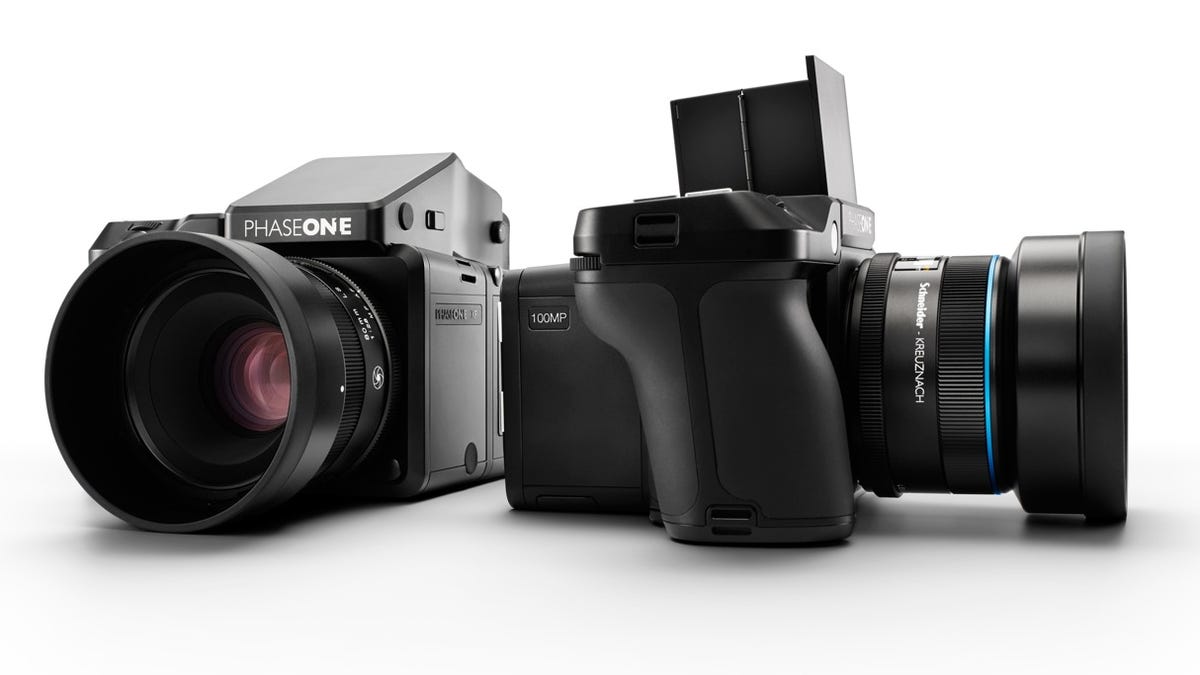Top-shelf camera reaches a whopping 100 megapixels
Phase One's camera comes with a price tag beyond the reach of most consumers, but its high-end technology could eventually finds its way into mainstream cameras.
Phase One's new XF 100MP extends the company's lead over competing cameras. At nearly $50,000, though, it is more likely to attract attention than customers.
For those who can pay their way past today's technology limitations, the new camera captures a remarkable 100-megapixel image.
The camera, released Sunday, uses a medium-format image sensor more than two-and-a-half times bigger than those in even high-end SLR cameras from mainstream manufacturers like Canon and Nikon. The size lets photographers reach a very high resolution without sacrificing other aspects of image quality, such as the ability to capture details in both bright and dark areas of a scene. This means photographers can print poster-sized images that still have abundant detail.
There is a reason, though, that only Hasselblad, Pentax, Leica and Phase One take the medium-format approach: price. Phase One's new product costs an eye-popping $48,990, which includes the camera body, the removable image sensor and an 80mm Schneider Kreuznach lens. In addition to price, medium-format cameras have another downside. They are bulkier and heavier than the SLRs that most people already leave at home.
Most photographers don't need 10 megapixels, much less 100. But medium-format designs can develop technology that later trickles down to mainstream cameras. And millions of photo enthusiasts, who often already have spent thousands of dollars on camera gear, aspire to higher achievements.
"It's like getting excited about sports cars and Formula 1," Phase One camera architect Lau Nørgaard said. "It's interesting to see where the extremes are, to see what can be done to get to the ultimate image quality."
Medium-format sensors are larger than those used by conventional cameras -- 53.7mm x 40.4mm for Phase One's latest compared to 36mm x 24mm for high-end SLRs. Larger sensors enable the use of larger pixels that can gather light more effectively for better image quality, but they also increase the size of the camera and lenses, and larger sensors are dramatically more expensive.
Phase One's products are geared for professional photographers who need to print large or very detailed photos, mostly those taking shots of fashion models, jewelry, watches, cars and architecture. Its previous top-end sensor had 80 megapixels.
Canon is chasing Phase One with today's 50-megapixel EOS 5DS cameras, which use smaller sensors the size of a frame of 35mm film, and its promised 120-megapixel model. Canon also has developed a 250-megapixel sensor, though it hasn't announced plans to commercialize it. Nikon's D810 offers 36 megapixels and Sony's A7R II features 42 megapixels.
The laws of optics pose problems for smaller sensors, though, making it harder or impossible for even carefully crafted lenses to deliver as much detail as the sensor can capture. Medium-format cameras have more leeway here.
It's hard to compete against Canon and Nikon, though, with vastly larger engineering teams than Phase One's 40 employees, Nørgaard said. He counters that Phase One can move faster, hand-calibrate each product as it ships, and cater exclusively to top-end customers.
"We don't have to compromise to meet a certain price," he said.


